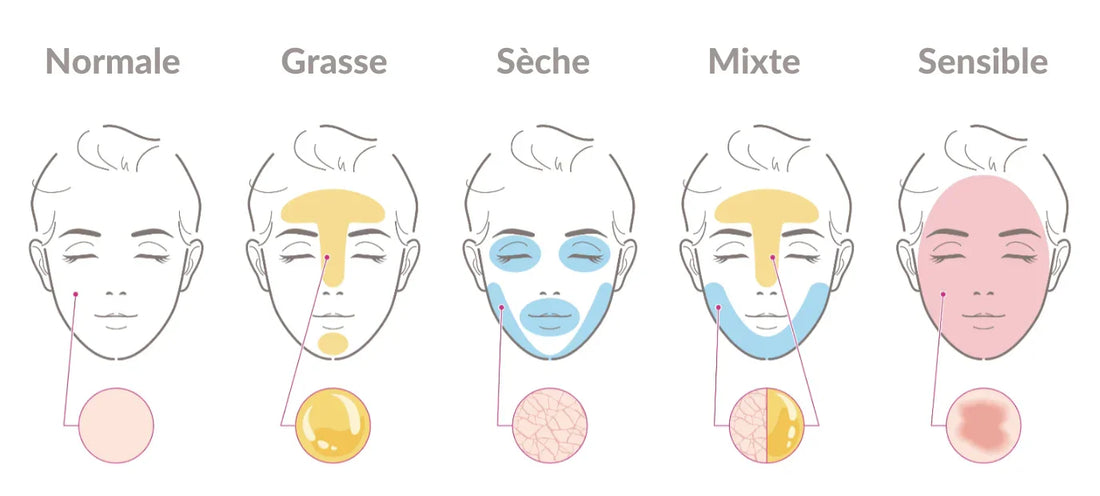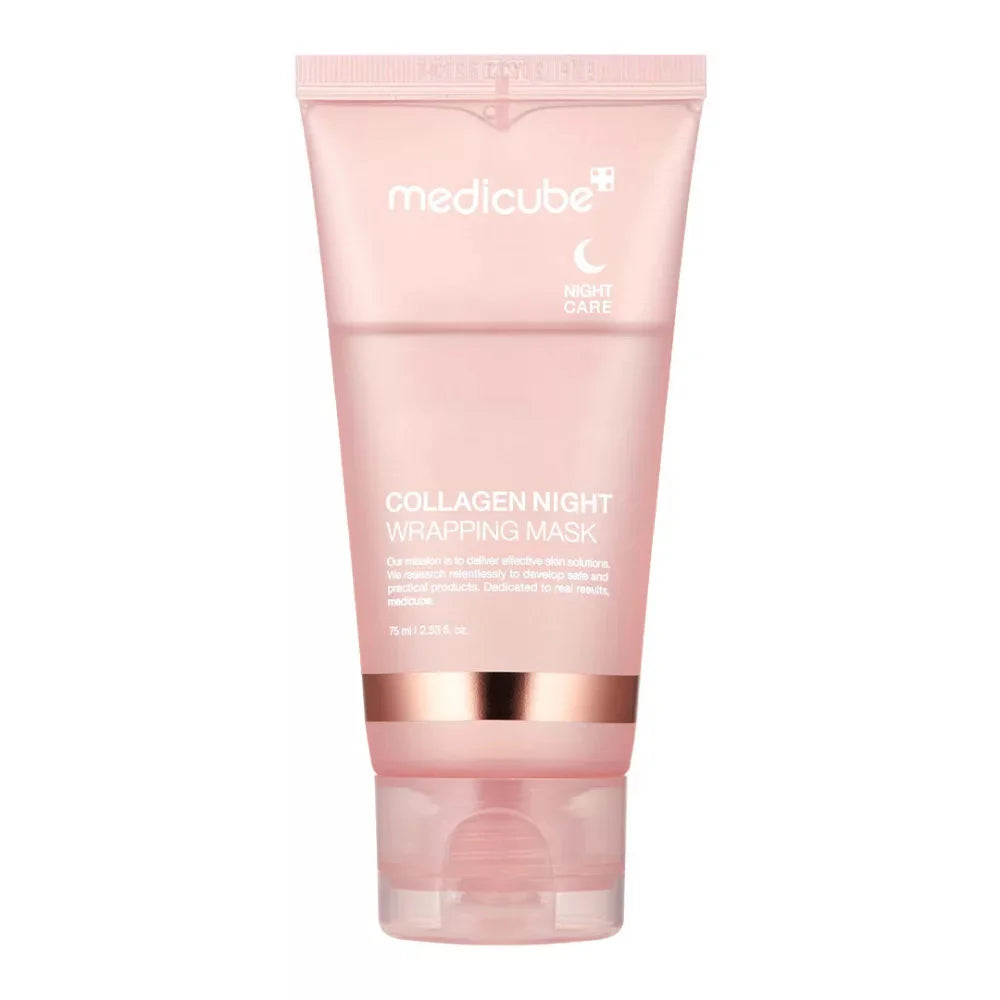
How to determine your skin type?
Partager
You've probably heard of skin types before, but what exactly are they? In this blog, we'll discuss how to determine your skin type and what ingredients and products to look for. Let's get started!

The bare face method
A simple way to determine your skin type is to carefully examine your bare skin. Start by washing your face with a cleanser. Then, gently pat dry with a soft towel without applying any skincare products.
After 30 minutes, observe your skin.
What does it look like? If it appears shiny on your cheeks and T-zone, you might have oily skin. If your skin feels tight and has flaky areas, it's probably dry. If you see an unbalanced mix of oiliness and dryness, you probably have combination skin. If you don't notice any particularly oily or dry areas, you probably have normal skin.
The blotting paper method
Another method to determine your skin type at home is to press a clean blotting paper against different parts of your face. Then, hold the paper up to the light to see how much oil has been absorbed.
Your skin type will generally depend on the amount of oil visible on the paper; the more there is, the more oily skin you likely have.
If there is little or no visible oil, you probably have dry skin. If the blotting paper reveals a small amount of oil on your forehead and nose, your skin is probably normal or combination.
1. Oily skin
This is a tricky skin type because you're likely to feel like everything you try makes your breakouts worse. Oily skin is more prone to acne because the excess sebum produced by the skin clogs pores, leading to more breakouts. This overproduction is called “seborrhea” in dermatology.

What to look for: There are a multitude of products available to treat acne and/or excess sebum production. AHAs, BHAs, benzoyl peroxide, sulfur, zinc, and retinoids are good options. Ingredients like niacinamide are also excellent for controlling seborrhea.
Many people with oily skin think they can't use oils, but short-chain oils like squalane or those rich in linoleic acid (a type of fatty acid that oily skin lacks) can be helpful in decreasing sebum production.
Avoid: Although oily skin is less sensitive, it can tolerate stronger treatments, but that doesn't mean you have to exfoliate constantly. Use AHAs/BHAs in moderation.
Treating acne and excess oil requires patience. Many studies show that in the long term, less frequent but consistent treatments produce similar results to more intensive treatments. Take your time to avoid damaging the moisture barrier.
2. Normal skin
In dermatology, this skin type is called "eudermic." This means balanced skin without excess oil or dryness. People with normal skin generally have fewer acne problems and smoother skin with fewer sensitivities. However, with age, their skin can become drier.

What to look for: Just keep doing what you're doing. A simple regimen of cleanser, moisturizer, and sunscreen is enough. You can add a serum for variety.
3. Combination skin
Combination skin is typically characterized by an oily T-zone and normal to dry cheeks. This skin type is difficult to manage because products for the T-zone may not work for dry cheeks and vice versa.

What to look for: Don't be afraid to apply different skincare products to different parts of your face. Use a light moisturizer for your T-zone and a richer formula for dry areas. Acne treatments should be applied topically to avoid irritating drier areas.
4. Dry skin
Dry skin produces less sebum than normal skin, leading to a loss of moisture and a weakened protective barrier. It can appear dull and rough and be caused by genetics, environmental factors, or acne treatments. It lacks natural moisturizing factors, such as urea, amino acids, and lactic acid.

Look for: Hyaluronic acid, ceramides, glycerin, urea, amino acids, plant oils, and salicylic acid are excellent for maintaining hydration.
Avoid: Excessive exfoliation, whether chemical or physical, can worsen dryness. Use exfoliants once a week. However, when used correctly, exfoliants and retinoids can thicken the deeper layers of the skin and help resolve issues related to dryness.
Cleansing twice a day can also dry out the skin. Cleanse only at night to remove sunscreen and other impurities, and rinse with water in the morning.
Assessment of skin type and condition
Unlike skin type, skin condition can vary throughout life, influenced by many internal and external factors: climate, pollution, medications, stress, hereditary factors that influence the production of sebum, sweat and natural moisturizing factors, as well as the products and care used.
For example, oily skin and dehydrated skin due to lack of hydration can show similar symptoms, but dehydration can be corrected within a few months, while oily skin is usually persistent.
Hormonal changes and environmental factors can also affect these conditions, so it's important to determine your skin type before



